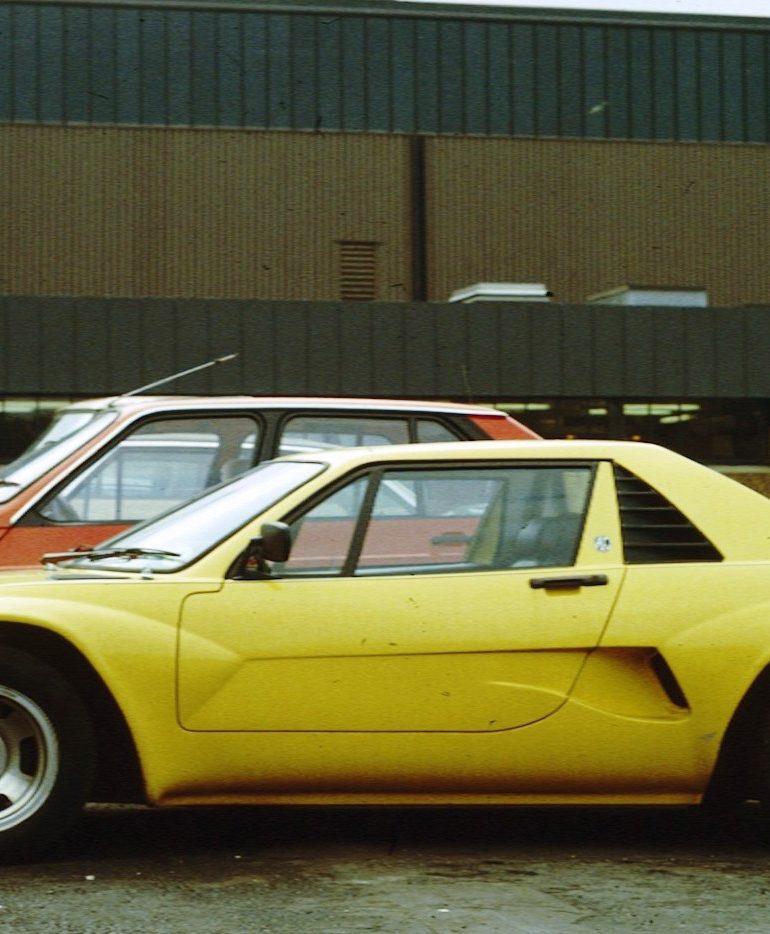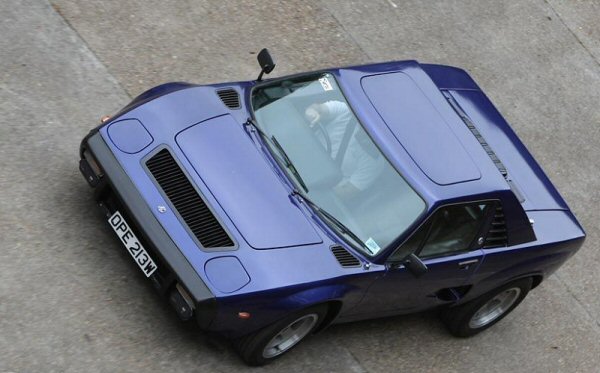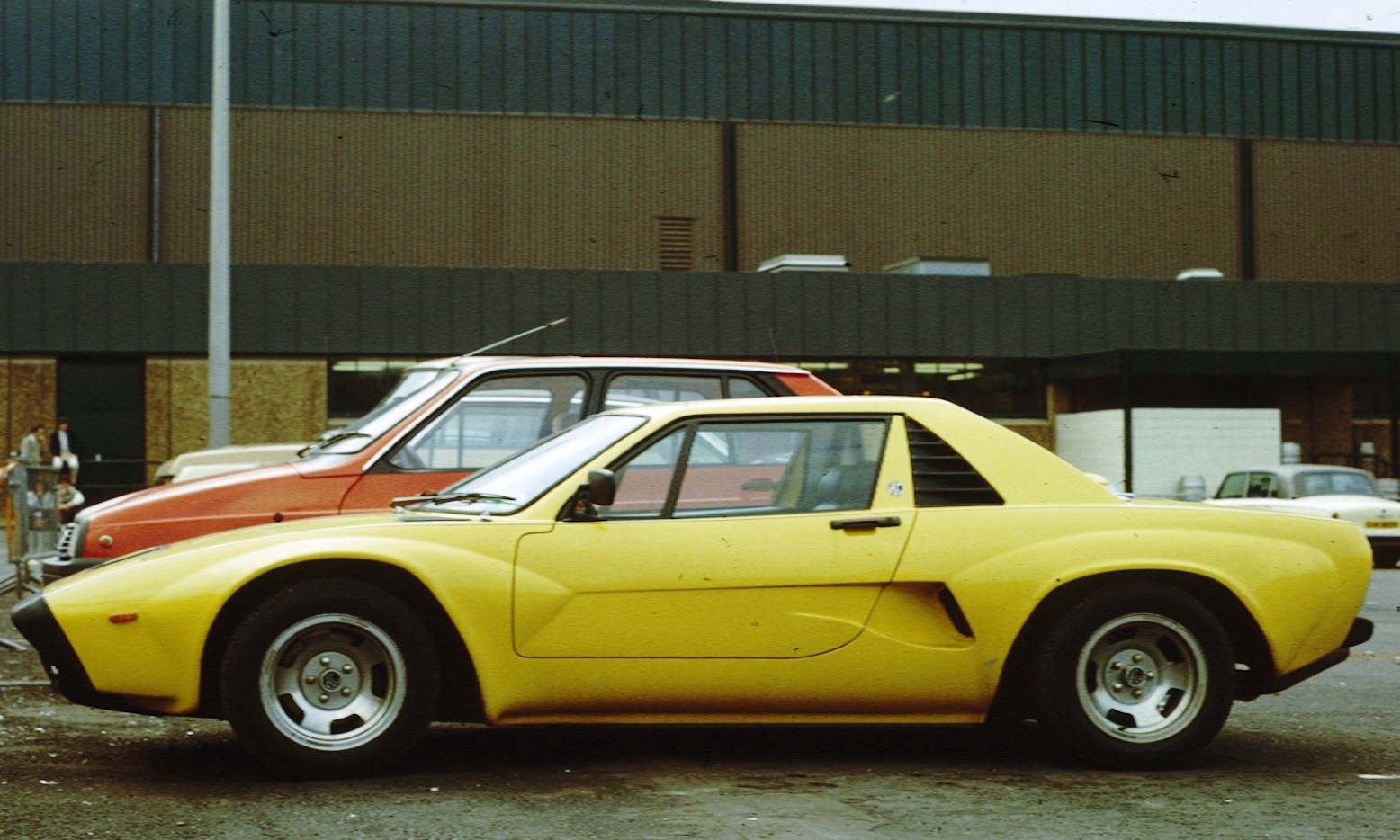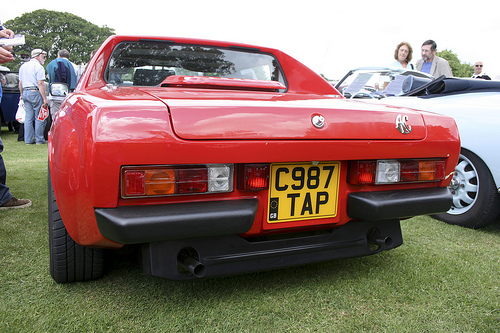1979→1984 AC 3000ME
The 1970s were not a good period for luxury car manufacturers and Derek Hurlock went searching for a totally new smaller car. Mid-engined designs were in fashion at the time and in 1972 the Diablo, a prototype with an Austin Maxi engine and transaxle was built by privateers Peter Bohanna and Robin Stables.
In much the same way as they had taken up the Tojeiro prototype and turned it into the Ace, AC acquired the rights and at the 1973 London Motor Show showed their own version, the mid-engined ME3000 with the 3.0-litre Ford Essex V6 engine installed transversely over a bespoke AC-designed gearbox. Development was virtually complete in 1976 when new Type Approval regulations were introduced. A prototype failed the 30 mph (48 km/h) crash test, and the chassis had to be redesigned. On the second attempt, the car passed with flying colours. This was a huge achievement for a tiny firm – Vauxhall had to make several attempts before the contemporary Chevette passed.
For AC, such delays meant that the first production cars (now renamed 3000ME) were not delivered until 1979, by which time they were in direct competition with the Lotus Esprit. Although comfortable, brisk, nicely built and practical, AC’s ambitions of selling 250 cars per year were a distant memory. After just 71 cars were sold, Hurlock called a halt to production as his health was suffering and the company was struggling in the teeth of a recession. In 1984 production stopped at Thames Ditton and the car and the AC name were licenced to a new company registered as AC (Scotland) plc run by David McDonald in a new factory in Hillington, Glasgow.
Here, 30 cars were built, including a development car tested with Alfa Romeo’s 2.5-litre V6 engine and a nearly-complete Mark 2 prototype of the same. Regardless (or possibly because) of these developments, AC Scotland called in the receivers in 1985. After selling the historic High Street works for redevelopment, AC themselves soldiered on as a service operation in the ’21st Century’ works on Summer Road until the Hurlock family finally sold their holdings in 1986 to William West. After some complex machinations the company was split between property interests and the car brand; the former was renamed and the latter was acquired by Brian Angliss.
Story by Wikipedia
In Detail
| type | Series Production Car |
| production years | 1979 – 1984 |
| released at | 1973 London Motor Show |
| built at | Hillington, Glasgow, England |
| production | 71 |
| engine | V6 |
| position | transversely |
| displacement | 2994 cc / 182.71001 in³ |
| power | 102.9 kw / 138 bhp @ 5000 rpm |
| specific output | 46.09 bhp per litre |
| bhp/weight | 127.19 bhp per tonne |
| driven wheels | RWD |
| curb weight | 1085 kg / 2392.4299 lbs |
| weight distro | 44.299999 % / 55.700001 % |
| wheelbase | 2299 mm / 90.5 in |
| length | 3988 mm / 157 in |
| width | 1651 mm / 65 in |
| height | 1143 mm / 45 in |
| top speed | ~193.08 kph / 120 mph |
| 0 – 60 mph | ~8.5 seconds |
| 0 – 100 mph | ~15.3 seconds |







